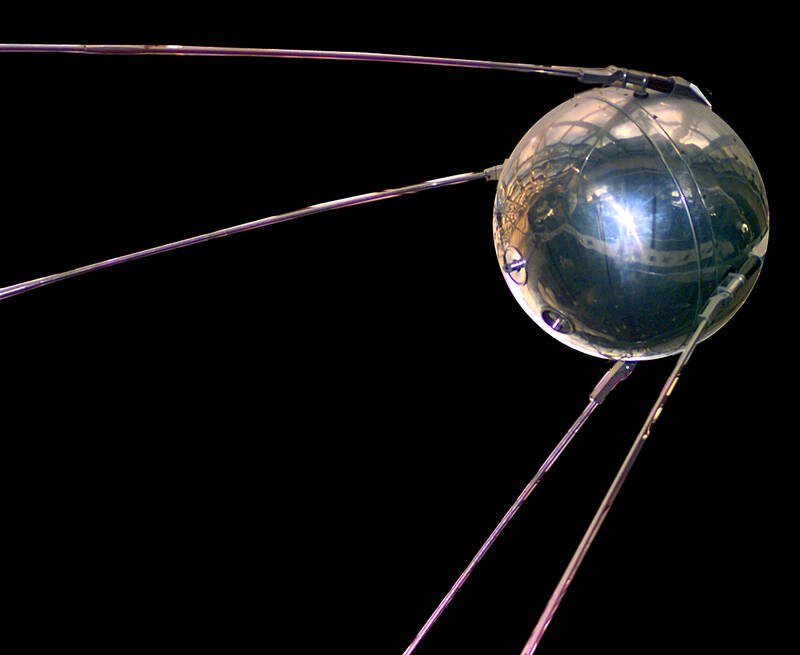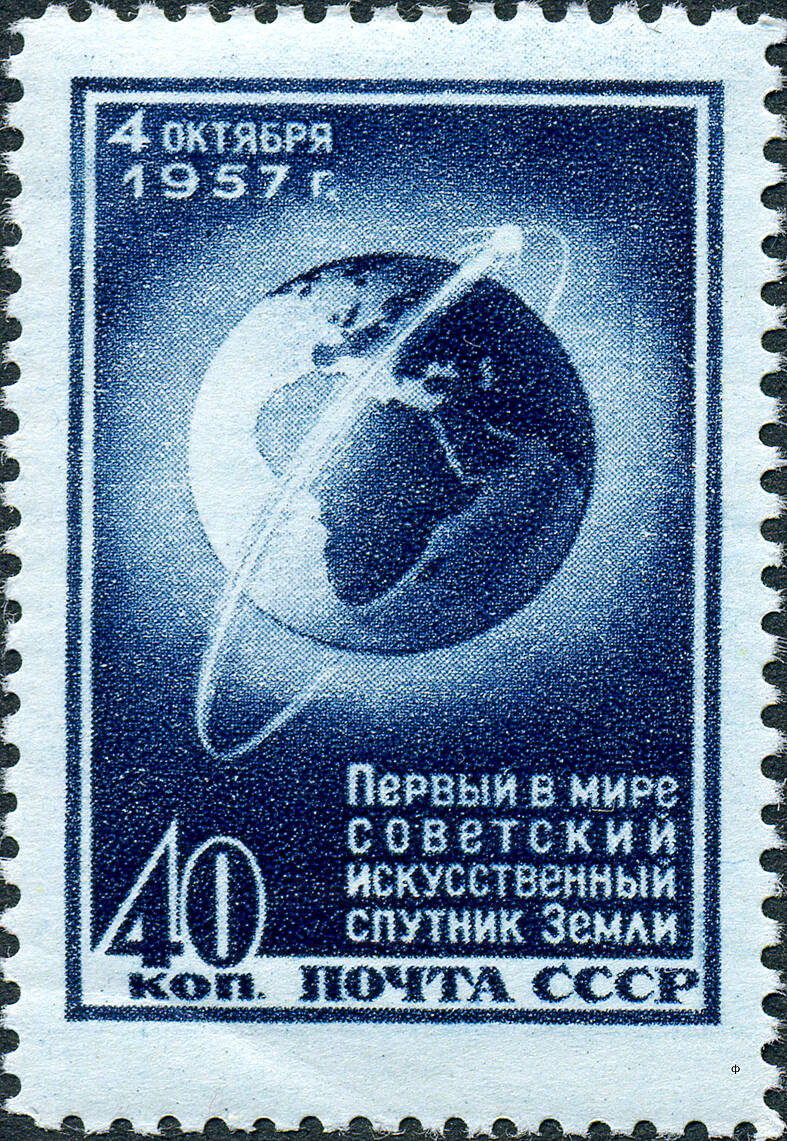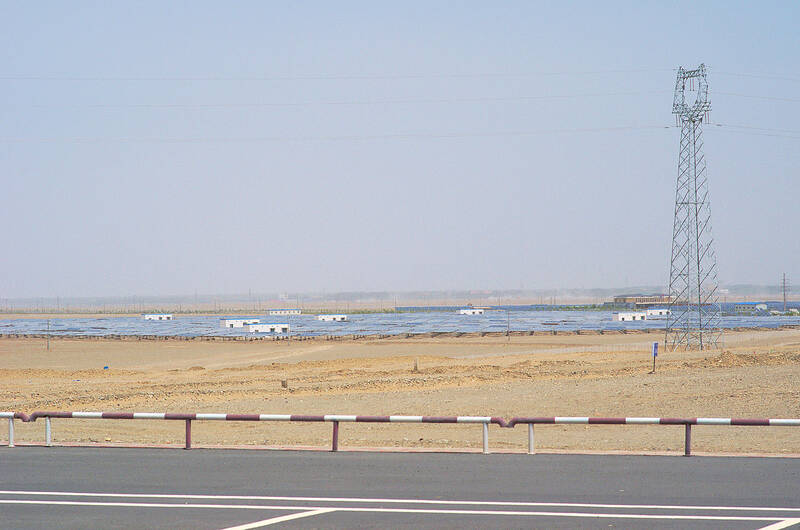One of the most transformative technical achievements in human history took place on Oct. 4, 1957, when the Soviet Union launched the satellite Sputnik 1 into orbit. Americans, utterly convinced of their technical and industrial superiority at the time were shocked, though some tried to play it down by dubbing it the “beeping grapefruit” due to its size and sole capability.
That jibe was entirely unfair, as it was a proof-of-concept mission. That they were able to achieve the historic first of launching into space and accurately position a satellite to orbit the earth was a singular achievement. The beeping radio waves ensured they could both prove and track their success.
Two months later, the American launch of Vanguard failed spectacularly.

Photo courtesy of Wikimedia Commons
Many Americans did take Sputnik very seriously at the time, and the term “Sputnik moment” today means an existential wake-up call. Those that took it seriously were proven correct; in less than four years the Soviets went from a “beeping grapefruit” to sending the incredibly brave Yuri Gagarin into space and safely returning, a first for humanity.
Note the positive language I used in describing the Soviet achievements. It is not to praise the Soviet Union, one of the most murderous regimes in history, but the talented people who accomplished these goals. This distinction is relevant in a Chinese context today.
SOVIET DOWNFALL

Photo courtesy of Wikimedia Commons
When DeepSeek Artificial Intelligence (AI) was launched in January, it was laughably dubbed a “Sputnik moment.” It was not even close. It was not a revolutionary leap into the unknown but rather an evolutionary improvement on the AI offerings already available.
Still, it was impressive and a wake-up call to the American tech giants that the Chinese were competitive. A string of recent AI releases by a range of Chinese tech giants proved that DeepSeek was not alone, but part of a Chinese ecosystem capable of challenging the Americans on most benchmarks, and often for far cheaper. The notoriously arrogant American tech companies were served warning they could not be complacent.
The Soviet Union proved that by diverting resources and cultivating exceptional talent, great achievements could be accomplished, but only to a point. Their top-down rigid setting of priorities lacked the nimble flexibility of the American system.

Photo courtesy of Wikimedia Commons
Consumer electronics is a perfect example. The US also diverted resources to national priorities in the space and defense industries, and like the Soviets, showed this can work.
State planners in the USSR were not able to successfully apply the technologies developed in one area to other areas the way the Americans did spectacularly well. American space and defense tech and researchers in American universities often interacted and many left to create a myriad of commercial applications in creative directions Soviet planners would never have dreamed of.
Backed by American capital, the tech often went on to find commercial success, providing even more funding to further advance and create new products, creating a positive feedback loop.

Photo courtesy of Wikimedia Commons
By the 1970s the Soviet Union simply could not keep up. Semiconductor technology accelerated rapidly in the US, developing an ever-increasing array of consumer electronics in calculators, computers and video games. The mass market made technologies the Soviets struggled to master even at great cost cheap and abundant in the US.
These technologies were snapped up and utilized by the very defense and space industries whose initial breakthroughs led to their initial creation.
MADE IN CHINA 2025
The system imposed by the Chinese Communist Party (CCP) is a hybrid Soviet-American system with Chinese characteristics.
The Chinese have learned one crucial lesson from both the Soviet Union and the Americans in the Cold War, which is to secure essential industries and materials necessary for national security. Following the collapse of the Soviet Bloc, the US forgot this key concept and lazily assumed that the free market would take care of everything.
Early on, the CCP prioritized monopolizing control of key minerals and rare earths, either by owning the means of extraction, the means of production, or both. They also prioritized key industries that would be required in wartime, such as steel and aluminum.
Like the Americans prioritizing and diverting resources to the space and defense industries, the Chinese have done the same but on a vastly grander scale. They have spent lavishly to subsidize and eventually control industrial supply chains to the point it is estimated they control around 30 percent of the world’s manufacturing capacity today.
It is estimated that China’s annual shipbuilding capacity in 2023 was 33 million gross tonnes. The rest of the world accounted for only 32 million tonnes, with the US ranking 14th accounting for only .10 percent of the world’s capacity at just under 65,000 tonnes.
Once the Chinese had mastered those relatively simpler technologies, in 2015 Xi Jinping (習近平) launched the “Made in China 2025” strategic economic plan to initially reduce reliance on foreign technology, moving toward the goal of leading the world technologically.
Though they are still generations behind in their goal of dominating advanced semiconductors, they are increasingly dominating the lower-end chips that power refrigerators and toasters, which are still strategically valuable.
On their other goals, they have made considerable progress and in many cases achieved success. Among other things, Chinese robotics, solar panels, AI, electric cars and high-speed rail are world-class.
In an Australian Strategic Policy Institute report on research papers and research institutions, they assessed that China led the world in 37 of 44 key technologies. In some cases, they lack the experience and precision technology to manufacture these products in the real world but they are working hard on closing this gap.
CREATIVE PROBLEM SOLVERS
Like the Soviet Union, the CCP is obsessed with absolute control and setting national priorities. Big tech companies in China were often spun off from the People’s Liberation Army and most are partly or mostly owned by the government. CCP cells are required to operate in these firms, and CCP political priorities must be obeyed by law.
Though they have largely replaced venture capital with government subsidies and benefits, they have learned from the Americans to allow these firms to be creative and follow market opportunities as long as they do not contradict CCP priorities. This allows for flexibility, innovation and ability to raise capital from selling products on the free market — and if they can flood international markets with subsidized products that drive foreign competitors out of business, so much the better.
Until recently, it was frequently claimed that the Chinese were only capable of copying and stealing intellectual property. Hearing this, I would always shake my head.
While it is true they did a lot of both in an often illegal and predatory manner, writing off Chinese talent and capabilities is a mistake when they are given some latitude to create on their own and are not too weighed down by corruption.
In the late 1990s and early 2000s I was the country manager for both China and Taiwan for an American software outsourcing firm. Most of my employees were software coders.
As coders, they had two problems. At the time, they still had not quite understood capitalism well enough to get the concept of “customer-friendly” design and approached it as an engineering problem, which was a struggle. The other was that they hated properly documenting their code, which I suspect was a ploy to ensure that they would become indispensable by making it harder for other coders to follow the logical flow.
But in creative problem-solving, they were excellent and enjoyed the challenge.
The CCP learned from the Soviets an obsession with maintaining control, but from the Americans not stifling innovation and tapping consumer markets to keep the money flowing.
Donovan’s Deep Dives is a regular column by Courtney Donovan Smith (石東文) who writes in-depth analysis on everything about Taiwan’s political scene and geopolitics. Donovan is also the central Taiwan correspondent at ICRT FM100 Radio News, co-publisher of Compass Magazine, co-founder Taiwan Report (report.tw) and former chair of the Taichung American Chamber of Commerce. Follow him on X: @donovan_smith.

April 14 to April 20 In March 1947, Sising Katadrepan urged the government to drop the “high mountain people” (高山族) designation for Indigenous Taiwanese and refer to them as “Taiwan people” (台灣族). He considered the term derogatory, arguing that it made them sound like animals. The Taiwan Provincial Government agreed to stop using the term, stating that Indigenous Taiwanese suffered all sorts of discrimination and oppression under the Japanese and were forced to live in the mountains as outsiders to society. Now, under the new regime, they would be seen as equals, thus they should be henceforth

Last week, the the National Immigration Agency (NIA) told the legislature that more than 10,000 naturalized Taiwanese citizens from the People’s Republic of China (PRC) risked having their citizenship revoked if they failed to provide proof that they had renounced their Chinese household registration within the next three months. Renunciation is required under the Act Governing Relations Between the People of the Taiwan Area and the Mainland Area (臺灣地區與大陸地區人民關係條例), as amended in 2004, though it was only a legal requirement after 2000. Prior to that, it had been only an administrative requirement since the Nationality Act (國籍法) was established in

With over 80 works on display, this is Louise Bourgeois’ first solo show in Taiwan. Visitors are invited to traverse her world of love and hate, vengeance and acceptance, trauma and reconciliation. Dominating the entrance, the nine-foot-tall Crouching Spider (2003) greets visitors. The creature looms behind the glass facade, symbolic protector and gatekeeper to the intimate journey ahead. Bourgeois, best known for her giant spider sculptures, is one of the most influential artist of the twentieth century. Blending vulnerability and defiance through themes of sexuality, trauma and identity, her work reshaped the landscape of contemporary art with fearless honesty. “People are influenced by

The remains of this Japanese-era trail designed to protect the camphor industry make for a scenic day-hike, a fascinating overnight hike or a challenging multi-day adventure Maolin District (茂林) in Kaohsiung is well known for beautiful roadside scenery, waterfalls, the annual butterfly migration and indigenous culture. A lesser known but worthwhile destination here lies along the very top of the valley: the Liugui Security Path (六龜警備道). This relic of the Japanese era once isolated the Maolin valley from the outside world but now serves to draw tourists in. The path originally ran for about 50km, but not all of this trail is still easily walkable. The nicest section for a simple day hike is the heavily trafficked southern section above Maolin and Wanshan (萬山) villages. Remains of